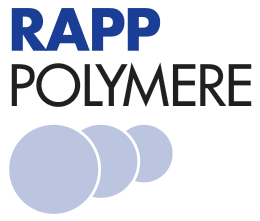€ 423,00*
133000-00-8.100MG
Product information
Lipid PEG Linkers, also referred to as PEGylated lipids, have become a popular focus in drug delivery. These amphiphilic molecules feature a hydrophilic polyethylene glycol (PEG) component linked to a hydrophobic lipid tail, which produces a distinct structure that can dissolve in both water and lipids. This quality makes it an appealing alternative for enhancing the stability, pharmacokinetics, and bioavailability of various therapeutics, including small molecules, proteins, and peptides. Lipid PEG has two main properties that contribute to its potential as a drug delivery system: biocompatibility and the ability to self-assemble into stable structures such as liposomes or micelles. Pam3Cys = N-Palmitoyl-S-[2,3-bis(palmitoyloxy)-(2RS)-propyl]-R-cysteinyl. The Pam3cys building block with an attached PEG chain is a new type of watersoluble adjuvants and PEG lipids at the same type. It features 3 palmitoyl lipid tails with a cystein core. The hydroxy group on one side of this PEG crosslinker is able to undergo esterification reactions with acids for reversible pegylation. It also enables further derivatization or replacement with other reactive functional groups.
Literature
L 19 PEG peptides and Pam peptides
- Rapp W., Zhang L., Beck-Sickinger A. G., Dares K., Wiesmüller K.-H., Jung G., Bayer E. Comparative study of antibody titers induced by a peptide epitope conjugated with protein, lipopeptide, polyoxyethylene and polyoxyethylene-polystyrene graft copolymer in Peptides 1990, Proceedings of the 21st European Peptide Symposium (Giralt E., Andreu D., Eds.), ESCOM, Leiden, 1991, 849.
- Butz S., Rawer S., Rapp W., Birsner U., Immunization and affinity purification of antibodies using resin-immobilized lysine-branched synthetic peptides, Pept. Res., 1994, 7 (1), 20-23.
- Rapp W., PEG Grafted Polystyrene Tentacle Polymers in Combinatorial Peptide and Nonpeptide Libraries: A Handbook; Jung, G., Ed.; Wiley-VCH Verlag: Weinheim, Germany, 1996, 425.
- Burkoth, T. S.; Benzinger, T. L. S.; Jones, D. N. M.; Hallenga, K.; Meredith, S. C.; Lynn, D. G. C-Terminal PEG Blocks the Irreversible Step in β-Amyloid(10-35) Fibrillogenesis. J. Am. Chem. Soc. 1998, 120 (30), 7655-7656. doi: 10.1021/ja980566b.
L 20 Pam3Cys, PEG Pam3Cys, PEG Pam3CysPep
- Wiesmüller, K. H.; Jung, G.; Hess, G. Novel Low-Molecular-Weight Synthetic Vaccine against Foot-and-Mouth Disease Containing a Potent B-Cell and Macrophage Activator. Vaccine 1989, 7 (1), 29-33. doi: 10.1016/0264-410x(89)90007-8.
- Kleine, B.; Rapp, W.; Wiesmüller, K.-H.; Edinger, M.; Beck, W.; Metzger, J.; Ataulakhanov, R.; Jung, G.; Bessler, W. G. Lipopeptide-Polyoxyethylene Conjugates as Mitogens and Adjuvants. Immunobiology 1994, 190 (1-2), 53-66. doi: 10.1016/s0171-2985(11)80283-4.
- Rapp W., Zhang L., Müller C.. Zühl F., Wiesmüller K.-H., Jung G., Bayer E., Polymer-Immunoconjugates Based on Lipopeptides by SPPS: A New Technical Approach, in Innovations and Perspectives in Solid Phase Synthesis, Peptides, Proteins and Nucleic Acids, Proceedings of the 3rd International Symposium 1993, (Epton R., Ed.), Mayflower Worldwide Limited, Birmingham, 1994, 197-200.

